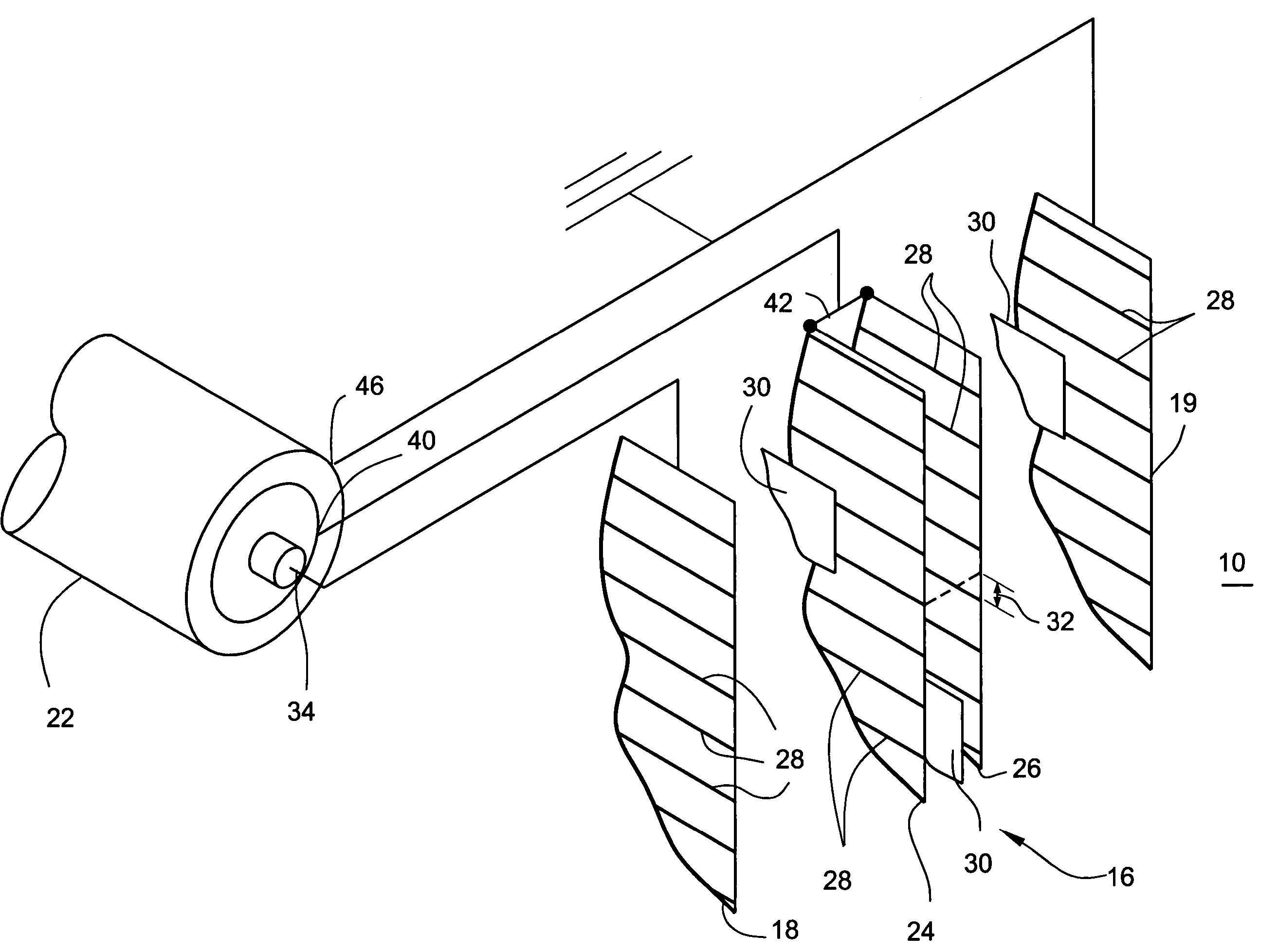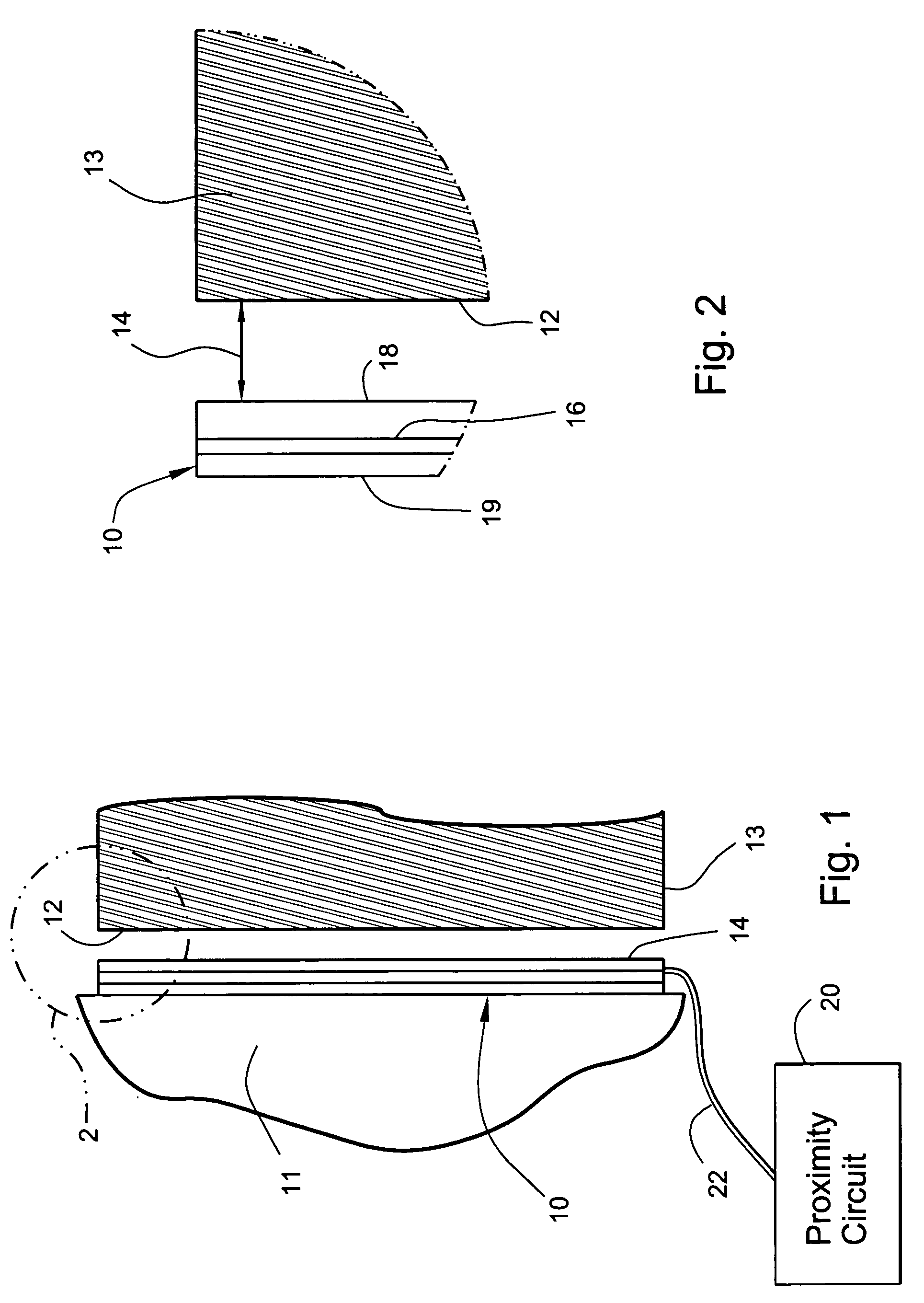Non-contact capacitive sensor and cable with dual layer active shield
a capacitive sensor and active shield technology, applied in the direction of resistance/reactance/impedence, instruments, measurement devices, etc., can solve the problems of generating heat enough to damage the sensor probe and the generator, affecting the accuracy of the expected output, and passing of the electric field signal on the sense plate, so as to reduce the leakage of the electric sense field through these plates , the effect of reducing the eddy curren
- Summary
- Abstract
- Description
- Claims
- Application Information
AI Technical Summary
Benefits of technology
Problems solved by technology
Method used
Image
Examples
Embodiment Construction
[0018]FIGS. 1 and 2 show schematically a sensor plate probe 10 adjacent an opposite surface 12 and a gap 14 between the sensor and the opposite surface. In one example, the plate probe 10 may be permanently fixed to an inside surface of a stator 11 of a power generator and the opposite surface 12 may be the outer circumference of a rotor of the generator. In this example, the sensor plate probe 10 measures the gap 14 distance between the annular inside stator surface and the cylindrical outer surface of the spinning rotor.
[0019] The sensor probe 10 generates a signal indicative of the distance of the gap 14 or of a proportionality of a dielectric medium in front of the sensor. In addition to measuring a distance of a gap, the sensor probe may determine a change in a dielectric of a fluid flowing in front of the sensor, or the thickness of a material.
[0020] The sensor probe 10 comprises several adjacent conductive plates 16, 18 and 19 that are electrically isolated from each other....
PUM
 Login to View More
Login to View More Abstract
Description
Claims
Application Information
 Login to View More
Login to View More - R&D
- Intellectual Property
- Life Sciences
- Materials
- Tech Scout
- Unparalleled Data Quality
- Higher Quality Content
- 60% Fewer Hallucinations
Browse by: Latest US Patents, China's latest patents, Technical Efficacy Thesaurus, Application Domain, Technology Topic, Popular Technical Reports.
© 2025 PatSnap. All rights reserved.Legal|Privacy policy|Modern Slavery Act Transparency Statement|Sitemap|About US| Contact US: help@patsnap.com



